Show:
SaaS Development: Everything You Need to Know
I remember the seething frustration of taking a wholesome picture with my friends, only to see a text pop-up, saying: “storage full, please delete some files”.
Just like that, I lost captures of my life’s most precious moments and it was heartbreaking.

Until Google Drive came along.
It was a Software-as-as-Service (SaaS) application that gave me free online storage.
I finally had a safe and spacious place to store my files on the web.
It was life-changing and according to data, it’s not just me.
Over 99% of companies are now using SaaS solutions, and over 86% plan to move all their operations to SaaS after 2022. No wonder the growth rate keeps surging with a whopping 18% every year.
SaaS is one of the most significant developments in the 21st century. It’s been changing lives, it changed mine, and I’m sure it will change yours too. So if you don’t know about it, then you’re missing out.
So without further ado, let’s find out everything there is to know about it.
What is the Software-as-a-Service Model?
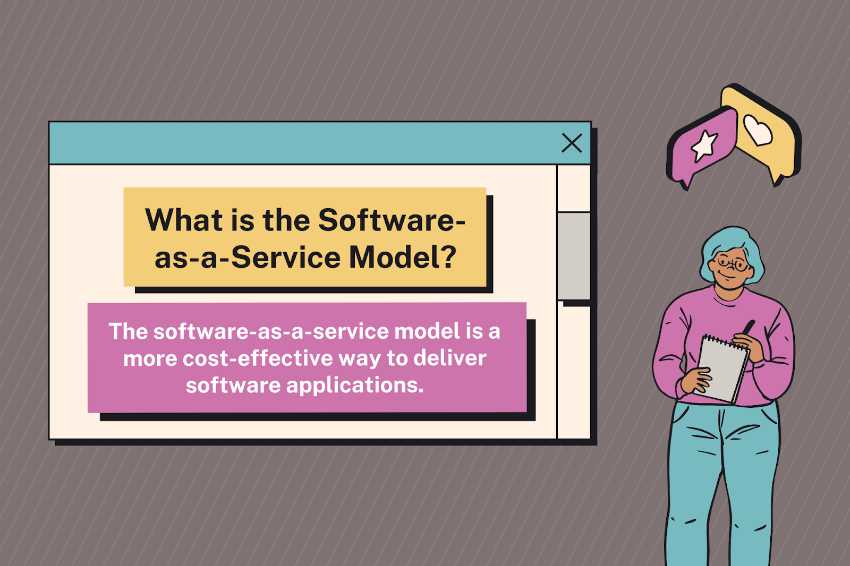
The Software-as-a-Service model is a browser-based method of software delivery and licensing. So there is no need to download anything on your computer because it’s completely accessible online through a subscription.
Aside from accessibility for the consumer end, it’s also more affordable for the provider due to its multi-tenant environment, which lowers the cost of software and hardware licensing. That’s why the software-as-a-service model is a more cost-effective way to deliver software applications.
These are some examples:
PaaS vs. IaaS vs. SaaS
There are various models of cloud service:
- Platform-as-a-Service
- Infrastructure-as-a-Service
- Software-as-a-Service
Since these techy words are difficult to grasp, let’s use a familiar analogy to understand these three better, which is ordering pizza.
Yep, you heard me right.
We’ll compare these three different cloud services to three different ways to order a pizza and see how they differ.
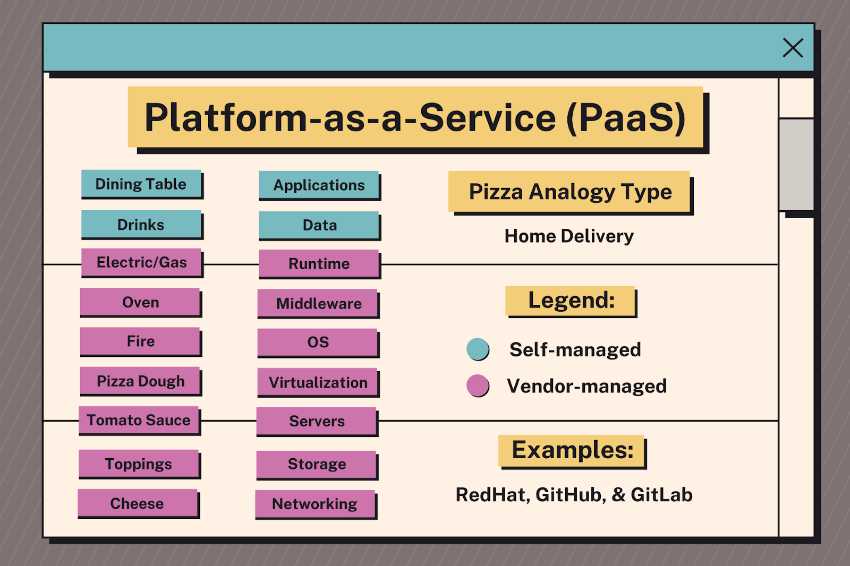
Platform-as-a-Service (PaaS) provides developers with a platform to make and deploy applications over the web without the hassle of managing network infrastructure.
So it’s like ordering a pizza delivery, the vendor makes everything and all you have to manage is your dining table and drinks (or applications and data in a techy context).
These are a few examples of PaaS:

Infrastructure-as-a-Service provides companies with the resources to build, modify, and run their platforms and software applications.
So it’s like a take & bake pizza order where you get an uncooked pizza so you can bake it yourself at home.
These are a few examples of IaaS:
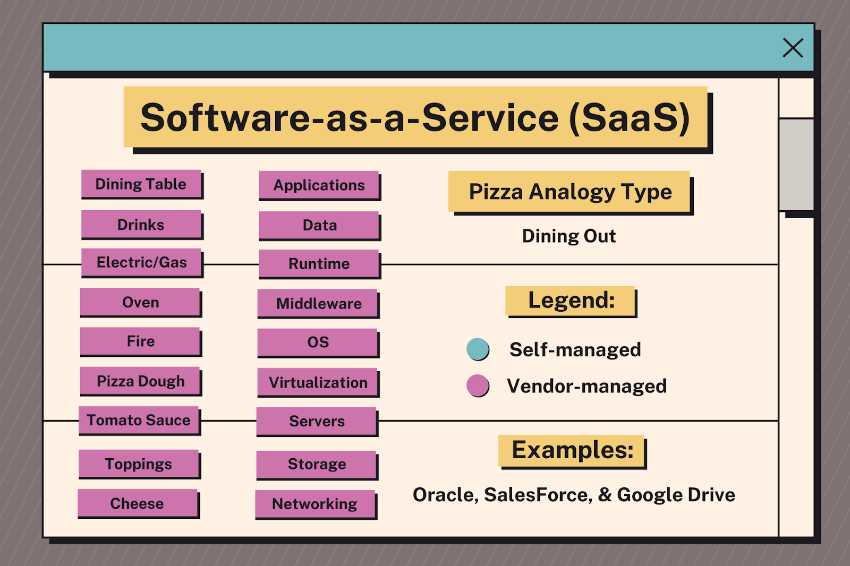
With the software-as-a-service model, you don’t build a platform or software but you’re using it online instead without any need for local installations.
So it’s like dining out where everything is served to you upfront.
These are a few examples of SaaS:
What is SaaS Application Development?
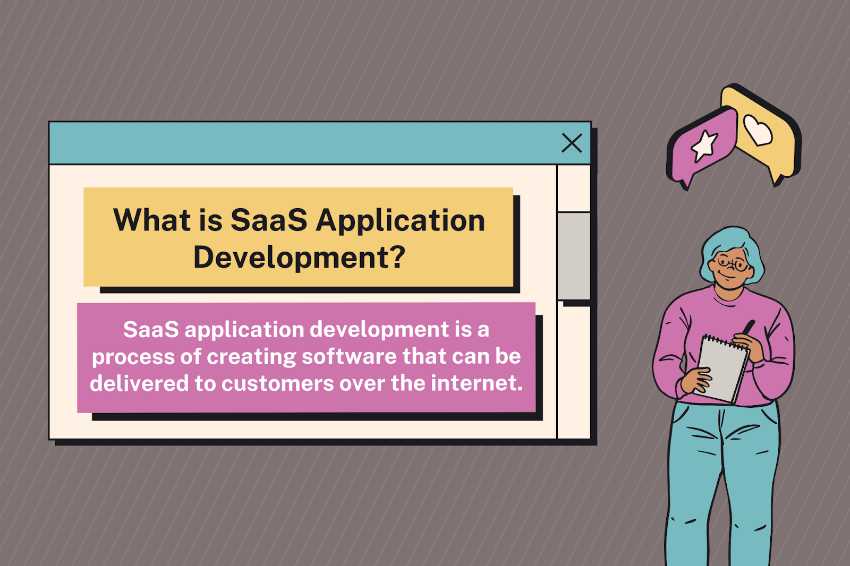
SaaS application development is a process of creating software that can be delivered to customers over the internet. From deployment, documentation, development, design, and testing: it covers every process of building cloud-based applications.
SaaS applications are usually developed using a microservices architecture, which means that they are composed of small and independent services that communicate altogether. This makes them easier to develop and deploy, which also makes them more scalable.
Despite this, however, finding the right talent is still a complex and difficult undertaking so we recommend going to professional development services like AxiomQ to breathe life into your projects instead.
How Is SaaS Different from a Web Application?

SaaS is a type of architecture that allows you to create accessible web applications over the browser.
This is in contrast to a traditional web application, which requires installation on a user’s computer. SaaS applications are hosted on a central server, and users can access them through the web alone.
This makes it easy for users to get started with using the application, as they don’t need to install anything on their computers. So you don’t need to worry about capacity issues on each user’s computer.
Overall, SaaS is a great choice for many different types of web applications. It’s easy to get started, it’s easy to scale, and it’s easy to update.
What Are The Benefits of Developing a SaaS App?

Increased Reach
Since SaaS applications don’t need local installations, device capacities won’t be a limiter anymore which drastically increases your audience reach. An example of this is Canva which grew so rapidly that it was producing 80 designs per second.
Reduced Development Costs
Developing a SaaS app generally requires less money and effort than a traditional desktop application. This is because you don’t need to make different versions for different operating systems, and you don’t have to worry about distributing your software to customers.
Increased Flexibility
With a SaaS app, you can quickly make changes and updates without having to go through the hassle and expense of releasing a new version of your software. This increased flexibility can be a major advantage when you need to make changes or add new features quickly.
Improved Customer Service
By developing a SaaS app, you can provide your customers with better customer service and support. With a SaaS app, customers can get help and support anytime, anywhere. This is because they can access your app from any device with an internet connection.
Increased Efficiency
A SaaS app can help you increase the efficiency of your business operations. This is because it can automate many tasks that are traditionally done manually. For example, you can use a SaaS app to manage customer data, track sales outcomes, and generate reports.
Improved Scalability
With a SaaS app, it’s easy to scale up or down as your business needs change. This is because you can quickly add or remove users from your app without having to make any changes to your infrastructure.
Reduced Maintenance Costs
A SaaS app requires less maintenance than a traditional desktop application. This is because you don’t have to worry about maintaining different versions of your software for different operating systems. In addition, SaaS apps are typically hosted by the provider, which means that the provider takes care of all the upkeep and maintenance.
Improve Security
When you develop a SaaS app, you can take advantage of the increased security that comes with hosting your app in the cloud. This is because cloud-based providers typically have more robust security measures in place than traditional desktop applications.
Better Disaster Recovery
A SaaS app can help you recover from a disaster more quickly and efficiently. This is because you can quickly get your app up and running again if it’s hosted in the cloud. In addition, your data is typically stored in multiple locations, which makes it less likely that you’ll lose all your data in the event of a disaster.
Improved Collaboration
With a SaaS app, it’s easy for team members to collaborate and work together on projects. This is because team members can access the same app from any device with an internet connection. In addition, SaaS apps typically have built-in collaboration features, such as chat and video conferencing, in addition to integrations with other SaaS products you might be using.
Overall, SaaS apps can save you money and provide a unique and convenient experience for users.
Resources to Explore the Benefits of Developing a SaaS App
Creating a successful SaaS application can bring many benefits to businesses, including increased productivity and scalability.
To help entrepreneurs and developers like you who are interested in building a SaaS app, here are a few resources that can provide useful information on the different aspects of this process.
- 80 designs per second (Reach)
- Requires less money (Cost)
- Customer service and support (Support)
- Support anytime, anywhere (Support)
- Track sales outcomes (Sales)
- Increased security (Security)
- More robust security measures (Security)
- Collaborate and work together (Collaboration)
- Integrations with other SaaS products (Collaboration)
Considerations For Developing A SaaS Application
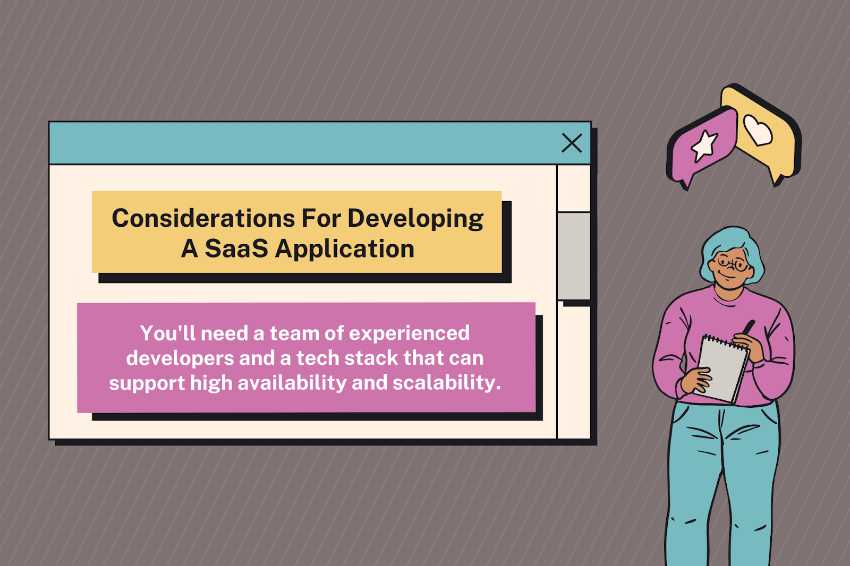
When it comes to developing a SaaS application, there are a few key things you’ll need to get started. First, you’ll need an experienced team who is familiar with the ins and outs of SaaS development.
Your Team
The SaaS team is composed of three main groups: product, engineering, and marketing. Each group has its own distinct set of responsibilities and works together to ensure the success of the company’s SaaS product.
Product
The product team is responsible for the development and management of the company’s products. They follow a strategic product management process and work closely with engineering to ensure that the products are well-designed and meet the needs of the customers.
Engineering
The engineering team is responsible for the development and maintenance of the company’s software. They work closely with products to ensure that the products are well-engineered and meet the needs of the customers.
This team should be able to handle everything from designing and building the application to deploying and managing it in the cloud.
UX Design
User experience and landing page design is just as important in SaaS development as it is anything else.
Let’s say you’re getting 10,000 visitors to your landing pages each month, and you’re converting 5%. You’re getting 500 strong leads. But if you plan intelligently, follow best practices, and experiment, a 10% bump in visitors converting (15% total conversion rate) would lead to 1,500 leads. You just tripled what your sales team has to work with.
Marketing
The marketing team is responsible for selecting the right target audience for your products and promoting the company’s products to that audience. They create strategies to grow product awareness and help get new customers onboarded quickly.
This includes helping plan and coordinate product launches, brand monitoring, design promotional materials, optimize landing pages to maximize conversions, build relationships with influencers and partners, measure KPIs, monitor customer feedback and develop an overall strategy. In addition, they help identify new opportunities for growth.
However, they also play a big role in engineering to ensure that the product’s user experience is as smooth and intuitive as possible. In addition, they can provide feedback on the software’s design and usability to improve its overall performance.
Team Building Resources
Whether you’re looking to create a more efficient workflow, streamline communication, or just make life easier for your customers – SaaS is the way to go but success isn’t guaranteed.
In order to make sure your SaaS initiatives are a success, it’s important to have resources and tools available to your product, design, and marketing teams.
Here are some of the best resources that will help your team do a better job with developing and marketing SaaS products.
- Development and management (Product)
- Product management process (Product)
- Landing page design (Design)
- Selecting the right target audience (Marketing)
- Improving leads and sales (Marketing)
- Brand monitoring (Marketing)
- Develop an overall strategy (Marketing)
The Tech Stack
Secondly, you’ll need a robust tech stack that can support your project. Let’s take a closer look at each of these requirements in turn.
The technology stack collects programming languages, tools, frameworks, and servers used to build, run, and maintain a software application. The technology stack of a SaaS platform can have a major impact on the performance, scalability, and security of the application.
Here are some of the most popular SaaS technology stacks in use today.
LAMP Stack
The LAMP stack is a popular open-source software stack that powers many SaaS applications.
It is made up of the following components:
Linux: The operating system at the heart of the LAMP stack.
Apache: The web server is used to serve web pages and API requests.
MySQL: The database used to store data.
PHP: The programming language used to build the web application.
The LAMP stack is a popular choice for SaaS applications due to its flexibility, scalability, and cost-effectiveness.
LEMP Stack
The LEMP stack is a variation of the LAMP stack that uses the Nginx web server instead of Apache. Like the LAMP stack, the LEMP stack is made up of open-source software components and is suitable for powering high-traffic SaaS applications.
MEAN Stack
The MEAN stack is a full-stack JavaScript solution for building SaaS applications. It is made up of the following components:
MongoDB: A NoSQL database used to store data.
Express.js: A web application framework used to build the web application.
AngularJS: A front-end JavaScript framework used to build the user interface.
Node.js: A JavaScript runtime used to run the web application.
The MEAN stack is a popular choice for SaaS applications due to its use of JavaScript throughout the stack, which can make development faster and simpler.
Ruby on Rails Stack
The Ruby on Rails stack is a full-stack web application framework that powers many popular SaaS applications. It is made up of the following components:
Ruby: The programming language used to build the web application.
Ruby on Rails: The web application framework used to build the web application.
MySQL: The database used to store data.
The Ruby on Rails stack is a popular choice for SaaS applications due to its ease of use and rapid development cycle.
The technology stack you choose can have a major impact on the performance, scalability, and security of the application.
SaaS Hosting
Here’s a quick rundown of some of the most popular choices for SaaS hosting:
Public cloud
This is perhaps the most popular option for SAAS hosting, as it offers a high degree of flexibility and scalability. The biggest downside to public cloud hosting is that it can be pretty expensive, particularly if you need to scale up your application quickly.
Examples of Public cloud hosting providers: AWS, Google Cloud Platform, and Azure
Private cloud
Private cloud hosting is a good option for those who need more control over their data and applications. You can customize your server based on your project requirements in a secured environment with virtual private server hosting.However, it’s important to note that private clouds can be quite expensive to set up and maintain.
Examples of Private cloud providers: VMWare and OpenStack
Hybrid cloud
A hybrid cloud combines the best of both public and private cloud, giving you the flexibility of the public cloud with the control of the private cloud. However, a hybrid cloud can also be more expensive than both public and private cloud options.
Examples of Hybrid cloud providers: AWS, Google Cloud Platform, and Azure
On-premises
On-premises hosting gives you the most control over your application, but it also requires that you have the infrastructure in place to support it. Additionally, on-premises hosting can be more expensive than cloud-based options.
Examples of On-premises providers: Microsoft, Oracle, and IBM
No matter which option you choose, it’s important to make sure that you select a SaaS hosting provider that can meet your specific needs. Do your research and compare the different options before making your final decision.

7 SaaS Development Tips from Experts
Define your target market
“Most of all, I discovered that to succeed with a product you must truly get to know your customers and build something for them.”
Tyler Rice , Co-Owner of Animas Marketing
It’s all about consistency
“I know most people are looking for our “one top tip” or the magical “hack” that got us, customers, there isn’t any one thing. We grew email by email, Skype by Skype, webinar by webinar, and looking back I can’t distill it down to any one thing. Build for scalability from the beginning. Your product will inevitably grow in popularity, so make sure it can handle the increased load without breaking down. This means ensuring that your code is efficient and properly partitioned so it can scale horizontally as needed.”
Erik Emanuelli, Founder of Erik Emanuelli
Customer feedback is critical, whether positive or negative!.
“Customer retention is a critical element of any SaaS business. Hence, give them what they are looking for, to retain them. Also, stay accountable and have a broader vision of products and services for your clients. Work hand-in-hand with your product team and be open to the ideas that come from fresh minds to stay fresh in the market.”
Sudhir Naidu, CEO of Troop Messenger
Focus on user experience
“The first 20 years of the web were won by those that built the best infrastructure. Now it’s won by those that build the best experiences.”
Mick Essex, Growth Marketing Manager of Essex at POWR
Build a great team with good character
“Each time I have built a team, personal traits — not professional skills — have been what propelled the company forward”
Daniel Tannenbaum, founder of Pheabs
Keep customer acquisition costs low
“The second biggest cause of startup failure: the cost of acquiring customers”
Mike Frahm, SEO & Web Design Specialist at Frahm Digital
Be passionate with what you do
You should develop a tool that fascinates you and solves an essential problem in the business world. Do some research and find out the problems businesses are facing, even with the current options available in the market. Then develop something that interests you. If you are passionate about something you create, you will give it 100% to make sure it performs well.
Dmytro Okunyev, Founder and CEO of Chanty
Conclusion
SaaS development can be a great way to create an innovative and scalable software application. With the right team in place and a well-defined tech stack, you can overcome any challenges that come your way during development.
Keep in mind, however, that developing a SaaS app does require a significant upfront investment. But if done correctly, the rewards can be well worth it.
If you want to learn about developing software-as-a-service applications, then AxiomQ is the perfect partner for you. We have a team of experienced developers who can teach you everything you need to know, and we also have the necessary tech stack to get the job done right.

 Return to Previous Page
Return to Previous Page








